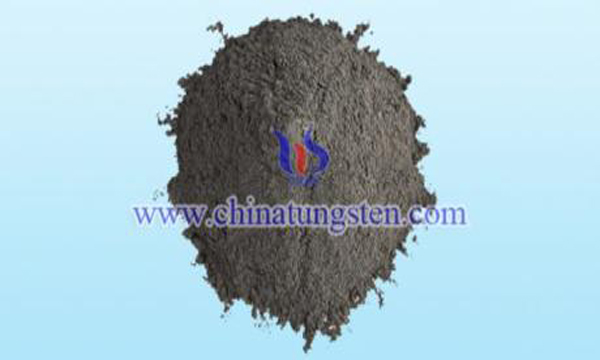Coarse Single Crystal Tungsten Carbide Preparation
- Details
- Category: Tungsten Information
- Published on Saturday, 07 September 2019 21:54
Hard metal is regarded as a kind of composite material, in which WC phase is used as hardness carrier. The brittleness of pure WC related to high hardness can be compensated by metal binder phases (usually Co, or Fe and Ni and their alloys and optional Cr). When the content of binder is high, the mechanical wear resistance is not enough, but when the content of binder is low, the mechanical strength is not enough.

In order to make the average fineness greater than 12 um FSSA. The preparation process of coarse single crystal tungsten carbide is as follows:
A mixture of 50 kg yellow WO3 and 0.12 kg carbonate (a mixture of 0.032 kg potassium carbonate, 0.046 kg lithium carbonate and 0.042 kg sodium carbonate by melting, followed by quenching and powdering) was mixed in a forced mixer. The obtained tungsten oxide doped with alkali metal carbonate of 0.58 mol% is reduced to tungsten metal powder by staying in hydrogen for 10 hours at 1150 ℃. The average fineness of the obtained tungsten powder is more than 50 microns according to ASTM B 330. The tungsten metal powder was mixed with carbon black in a forced mixer and carburized at 2250 ℃. Larger single crystals larger than 100 um.
After wet milling with 6% cobalt powder in hexane for 15 hours (material: ball = 1:2 weight fraction), the hardness of cobalt powder is 974 kg/mm3 (HV30) obtained by vacuum sintering at 1420 ~℃. The grinding time is extended to 20 hours, resulting in the hardness increase to 1024 kg/mm2. Its porosity is A02B02 or A02B00 according to ISO 4505.
After wet grinding with 9.5 wt% CO in hexane for 10 hours, the hardness was 830 kg/mm2 after vacuum sintering at 1420 ℃. Its residual porosity is A02B00 according to IS04505, and the hard metal is very coarse.
- Tungsten Carbide Manufacturer & Supplier, Chinatungsten Online: tungsten-carbide.com.cn
- Tungsten News & Prices of China Tungsten Industry Association: www.ctia.com.cn
- Molybdenum News & Price: news.molybdenum.com.cn
- Tel.: 86 592 5129696; Fax: 86 592 5129797; Email: sales@chinatungsten.com



 sales@chinatungsten.com
sales@chinatungsten.com